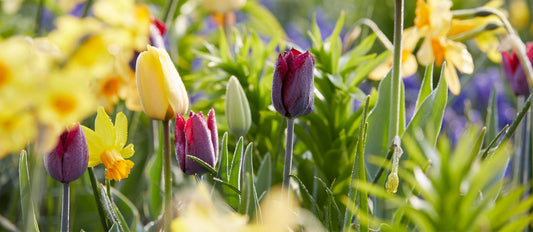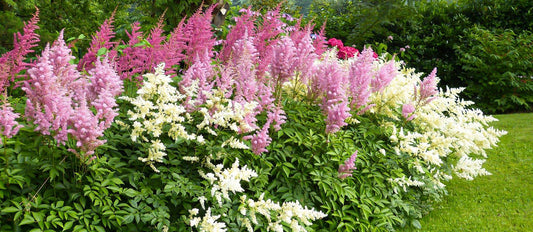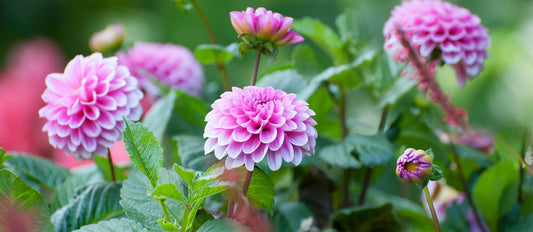The lily (Lilium) is beautiful in the garden, on the patio or balcony. Will you want to combine lilies in a border with other garden plants? Or do you prefer to place them together in a planter? These flowers can even be put in a vase as a cut flower. Lilies are always a good choice! Caring for lilies is simple, and with a little bit of attention you will definitely be rewarded with the most beautiful flowers!
Planting lilies
Taking care of lilies starts at planting. This summer-blooming flower bulb is planted in autumn or spring and will flower in the summer. The lily bulbs can be planted in the soil from September to December (if the ground has not frozen). In springtime, the lily bulbs can be planted until April. Plant the lily bulbs with its pointed end upwards, about twice as deep as the flower bulb is high, and water immediately after planting. Click here for more information and tips on planting lilies.
Lilies are also happy to be planted in a large flower pot or container on the terrace or balcony. When planting flower bulbs in a pot, use good, fresh potting soil. Potting soil is a mixture of natural materials, is airy and it retains water well. Perfect for helping lilies in flower pots grow strong and flower. Water potted plants more often than those planted in the open ground.
Watering lilies
After planting the lily bulbs it is important to give them a good watering. This will help the flower bulbs to root well. The sooner they grow strong roots, the more resistant to cold the flower bulbs will be in the autumn and winter. Be sure that you also keep the earth moist in spring, but not too wet. Because lilies have a bare bulb, they are less tolerant of extreme drought or too much moisture. Don't water unless the soil feels dry to the touch. Lilies can also use some water while they are blooming.
Fertilising lilies
Lilies can also use some additional flower bulb food in autumn. This food is given in the form of organic flower bulb fertilisers. It contains exactly the right amount of nutrients for creating strong flower bulbs and abundant flowering. Flower bulbs extract their food mainly from the bulb, so they don't need to be fertilised very often. If you want to replant the bulbs, you only need to fertilise them once when they start flowering and then again when they finish flowering.
Scarlet lily beetle
The scarlet lily beetle is about seven millimetres long. It is recognisable by its red back and can cause serious damage to lily flowers and leaves. When the lilies have grown about 15 cm high, you can treat them with 100% natural pesticide to combat leaf insects. These products protect the lilies without damaging the soil.
Do you want to plant lily bulbs this autumn? Then take a look at Bakker's range of lilies. Are you more interested in other kinds of flower bulbs, or have you not yet decided what you want to plant? Browse Bakker's extensive flower bulb range.




